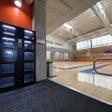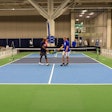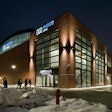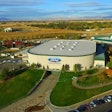Source: The National Athletic Trainers' Association (NATA)
DALLAS, Texas, July 29, 2015 – With a near-record number of deaths from lightning reported by the National Weather Service this summer, the National Athletic Trainers’ Association has reissued guidelines to ensure a safe outdoor environment.
“This is a peak time of year for lightning which can often appear without warning. It is critical for those who are in charge of sports and recreational activities as well as outdoor enthusiasts to be aware of lightning danger and prepare accordingly,” said Katie Walsh Flanagan, EdD, ATC, East Carolina University, who chaired NATA’s lightning safety position statement writing group. “Proper preparation and notifying participants of lightning danger can help ensure safety protocols are in place.”
NATA encourages proper lightning safety policies for coaches, athletic trainers, parents, administrators and others involved in athletic or recreational activities:
1. Establish a lightning-specific emergency action plan for each venue:
- Promote National Weather Service lightning safety slogans such as “No Place Outside is Safe When Thunderstorms are in the Area” or “Half an Hour Since Thunder Roars, Now it’s Safe to Go Outdoors.”
- Establish a chain of command.
- Prior to events, identify safe locations from lightning hazard, such as a building or fully enclosed space (or car). Unsafe locations include open-air shelters (one or more sides not fully enclosed), picnic shelters or bus stops, which are partially open to the elements. Towers, trees and open fields can also be targets for lighting. Know how long it will take to get to the safe venues and plan accordingly.
- Identify specific criteria for suspending and resuming activity. Allow time for evacuation of the premises and suspend activities until 30 minutes after the last lightning strike or sound of thunder.
2. Ensure lightning and general weather awareness: Use a designated weather watcher and the National Weather Service to monitor local weather. Consider subscribing to a commercial, real-time lightning detection service that has been independently verified so you can determine how far away a storm is and when it is best to go inside.
3. Prepare large venue planning protocols: Direct spectators to the nearest safe place; identify enough close-proximity locations; ensure a safe and orderly evacuation, and consider the time necessary to move a large crowd in and out of the facility.
4. Provide first aid: Rescuers and emergency personnel must ensure their own safety before venturing out into the venue to provide aid. Once there, move patients to a safe location if needed and evaluate and treat them accordingly. If an AED is available, it should be used on anyone who appears unconscious or pulseless.
Thunderstorms and the threat of lighting are particularly prevalent from afternoon to early evening from late spring to early fall. Areas with the most lightning activity are Florida, the Gulf states, the Mississippi and Ohio River valleys, the front range of the southern Rocky Mountains and parts of the Southwest.
“Putting an emergency action plan in place, following the direction of medical care and safety personnel, and remaining calm and organized are essential,” adds Walsh Flanagan. “Once the lightning has passed outdoors, enthusiasts can return safely to activity and continue to enjoy the benefits of summer fun.”
Key Statistics:
- During the last decade, lightning was responsible for an average of 42 fatalities yearly in the U.S. and an estimated 10 times as many injuries. There have been 21 reported lightning fatalities so far this year according to the National Oceanic and Atmospheric Administration (NOAA).
- In the same period in 2014, NOAA only reported 17 deaths attributed to lightning.
- This current information represents the highest recorded fatality rate since 2010, when 22 lightning-related deaths were reported in the same time frame.
- The National Weather Service reported data from 2010-2011, with 48 percent and 62 percent of lightning fatalities attributed to sport and recreation, respectively.
The above guidelines are from NATA’s position statement, “Lightning Safety for Athletics and Recreation.” The statement was created by the NATA Research & Education Foundation to minimize risk and incidence of injury and was published in the Journal of Athletic Training, the association’s scientific publication. To read the statement in its entirety, please visit: https://www.nata.org/sites/default/files/2013_lightning-position-statement.pdf
About NATA: National Athletic Trainers’ Association (NATA) – Health Care for Life & Sport
Athletic trainers are health care professionals who specialize in the prevention, diagnosis, treatment and rehabilitation of injuries and sport-related illnesses. They prevent and treat chronic musculoskeletal injuries from sports, physical and occupational activity, and provide immediate care for acute injuries. Athletic trainers offer a continuum of care that is unparalleled in health care. The National Athletic Trainers' Association represents and supports 39,000 members of the athletic training profession. Visit www.nata.org






























